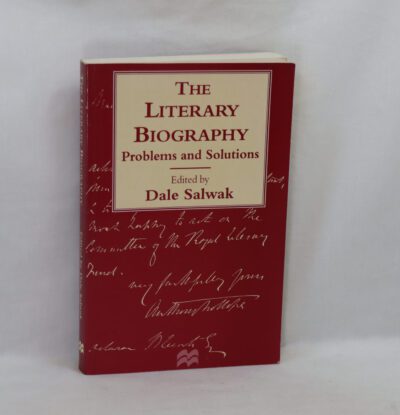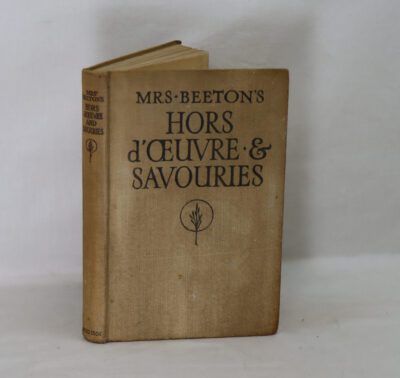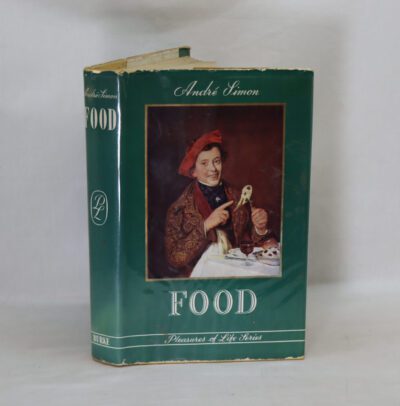The Story of Painting. Sister Wendy Beckett.
By Sister Wendy Beckett
ISBN: 9780810943889
Printed: 1994
Publisher: Dorling Kindersley. london
| Dimensions | 23 × 29 × 4 cm |
|---|---|
| Language |
Language: English
Size (cminches): 23 x 29 x 4
Condition: Fine (See explanation of ratings)
Item information
Description
In the original dustsheet. Cream cloth binding with gilt title on the spine.
F.B.A. provides an in-depth photographic presentation of this item to stimulate your feeling and touch. More traditional book descriptions are available.
Chronicles the history of eight hundred years of Western painting, from the Byzantine era to post-modernism, highlighting styles, techniques, media, artists, and themes.
Reviews:
-
Sister Wendy’s Story of Painting has been in our home for many years. I finally had to order a second copy when our first one fell apart after 20 years of constant use. We kept it in the bathroom and every family member (7 of us) would pick it up and read the marvelous descriptions and revelations that Sister Wendy gave about each painting while we were doing our business. It was one of the few ways we had to introduce art and culture to our 5 kids without having them think we were trying to ram it down their throats. They loved the book as much as we did even though they wouldn’t admit it then. Our adult daughter recently asked if I could get a new copy for her family because she missed it so much. I did and a new one for me too.
-
Don’t be ashamed to have Sister Wendy on your coffee table. And read the book, don’t just look at the pictures. I’ve got so many art books that I’ve never really read through but this one is just so-o-o interesting. It has the strength of giving a sound historical context to the art. It also is nowhere near as dumbed down as you think it’s going to be.
-
Bought following memories of watching Sister Wendy on TV and found as enlightening as she is herself. The pictures are of such a size that you can readily immerse into them and the text is light but informative. Especially good as it adds insight into what we see by also explaining what we don’t see i.e Greeks tendency to paint onto wood. Highly recommended as an introduction into art or simply as a quick capture snapshot of what has been created.
Wendy Mary Beckett (25 February 1930 – 26 December 2018), better known as Sister Wendy, was a British religious sister and art historian who became known internationally during the 1990s when she presented a series of BBC television documentaries on the history of art. Her programmes, such as Sister Wendy’s Odyssey and Sister Wendy’s Grand Tour, often drew a 25 percent share of the British viewing audience. In 1997 she made her debut on US public television, with The New York Times describing her as “a sometime hermit who is fast on her way to becoming the most unlikely and famous art critic in the history of television.”
Beckett spent many years translating Medieval Latin scripts before deciding, in 1980, to pursue art. Her first book, Contemporary Women Artists, was published in 1988. Sister Wendy Contemplates Saint Paul in Art was published in 2008 to celebrate the Year of Saint Paul. In May 2009, Encounters with God: In Quest of the Ancient Icons of Mary was published, which follows Beckett’s pilgrimage to see the earliest icons of Mary which had survived the Byzantine Iconoclasm. Beckett continued writing about her interest in icons in the second volume of her Sister Wendy Contemplates series, published in July 2011. This book, entitled The Iconic Jesus, takes the reader through scenes from the New Testament, accompanied by Beckett’s reflections. Her next book, published in 2011, The Christ Journey, consists of her commentaries on the artwork of Greg Tricker.
Beckett required medical treatment as an outpatient at a local hospital. The television chef Delia Smith, a Roman Catholic convert, volunteered to drive her there each week. Smith also drove her around the country to meet the artists when Beckett was writing her book about contemporary women artists. Through this the two became good friends.
Having overheard her commentary while attending an art exhibit, a film crew asked to videotape her. This brought her to the attention of a BBC producer and led, in 1992, to the debut Sister Wendy’s Odyssey.
Beckett was often effusively verbal in her descriptions of the human body in paintings, both male and female. In view of her religious state, this came as a surprise to some viewers. She insisted, however, on describing the depiction of the human anatomy in art when it was called for, stating that “God did not make a mistake when He created the human body, so I am not making a mistake by describing it.”
Want to know more about this item?

Related products
Share this Page with a friend













